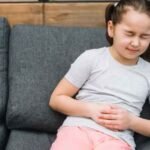As the seasons change, so do the needs of your hair. Transitioning your hair care routine to accommodate these changes is essential for maintaining healthy, vibrant locks throughout the year. From battling dryness in the winter to combating humidity in the summer, understanding how to adjust your hair care routine can make a significant difference in the health and appearance of your hair. In this blog post, we’ll explore tips and tricks for transitioning your hair care routine seamlessly with the changing seasons.

Understanding Seasonal Hair Needs
Your hair requires special attention and care tailored to the challenges posed by each season. Here’s a breakdown of the seasonal demands and how to address them effectively:
Winter Woes
Challenges:
In winter, cold temperatures and indoor heating systems strip moisture from your hair, leaving it dry, brittle, and prone to breakage. The lack of humidity exacerbates frizz and static electricity, making styling difficult.
Solution:
- Hydration is Key: Use moisturizing shampoos and conditioners to replenish lost moisture. Consider incorporating deep conditioning treatments to nourish and hydrate your strands.
- Combat Frizz: Apply anti-frizz serums or leave-in conditioners to tame flyaways and control static. Limit heat styling to prevent further damage.
- Protective Styling: Shield your hair from harsh weather conditions by wearing hats or scarves. Avoid overwashing, as frequent shampooing can strip away natural oils.
Summer Struggles
Challenges:
Summer brings heat and humidity, leading to oily scalps, limp strands, and increased frizz. UV rays from the sun can also cause hair damage, resulting in weakened strands and color fading.
Solution:
- Clarifying Cleansing: Use clarifying shampoos to remove excess oil and product buildup from your scalp. Opt for lightweight, hydrating conditioners to avoid weighing down your hair.
- Frizz Control: Apply anti-humidity serums or styling creams to combat frizz and maintain sleek hairstyles. Consider protective hairstyles like braids or buns to minimize exposure to the elements.
- UV Protection: Use hair products containing UV filters or wear hats to shield your hair from sun damage. Minimize heat styling and consider air-drying your hair whenever possible to reduce further stress.
Transitioning from Winter to Spring
As the frosty grip of winter loosens its hold and spring begins to bloom, it’s time to adapt your hair care routine to suit the shifting weather conditions. Here’s how to ensure your locks remain healthy and vibrant as the seasons change:
1. Lighter Hair Products
Swap out heavy, winter-specific hair products for lighter alternatives. Opt for a moisturizing shampoo and conditioner formulated for normal to dry hair to replenish moisture without weighing your hair down. These lighter formulations will help prevent buildup and keep your locks feeling fresh and bouncy.
2. Introduce Leave-in Conditioner
Combat the dryness and frizz that often accompany the transition from winter to spring by incorporating a leave-in conditioner into your routine. This extra layer of moisture will help hydrate and nourish your strands, keeping them smooth and manageable despite the fluctuating humidity levels.
3. Schedule a Trim
Treat your hair to a much-needed trim to eliminate any split ends and revitalize your style for the new season. A fresh cut will not only remove damaged hair but also add shape and body to your locks, making them look healthier and more vibrant as you embrace the warmer weather.
Summer Hair Care Tips
As the sun beats down and humidity levels rise, your hair requires extra care to stay healthy and vibrant during the summer months. Here are some essential tips to keep your locks looking their best:
1. Protect from UV Damage
Invest in a quality heat protectant spray containing UV filters to shield your hair from the sun’s harmful rays. Apply it generously before heading outdoors to prevent color fading, dryness, and brittleness caused by sun exposure.
2. Minimize Frizz with Lightweight Products
Opt for lightweight hair products like serums or mousses to combat frizz and keep your hair looking smooth and sleek. These formulations provide hydration and control without weighing down your locks, making them ideal for hot and humid weather conditions.
3. Stay Hydrated Inside and Out
Keep your hair hydrated by drinking plenty of water throughout the day. Hydration from within helps nourish your hair follicles, promoting healthy growth and reducing dryness and brittleness. Additionally, consider using hydrating hair masks or conditioners to replenish moisture lost to the summer heat.
4. Limit Heat Styling
Minimize heat styling during the summer to prevent further damage to your hair. Embrace air-drying whenever possible or use low-heat settings on your styling tools to reduce stress and breakage. Opt for heat-free hairstyles like braids or twists to keep your hair protected while still looking chic.
5. Protect Your Scalp
Don’t forget to protect your scalp from sunburn by wearing a hat or applying sunscreen to your part and exposed areas. Sunburnt scalp can lead to discomfort and peeling, affecting the health of your hair follicles and overall hair growth.
6. Rinse After Swimming
After swimming in chlorinated pools or saltwater, rinse your hair with fresh water to remove any residue that can strip away moisture and cause damage. Follow up with a hydrating conditioner or treatment to replenish lost nutrients and prevent dryness.
Transitioning from Summer to Fall
As the vibrant hues of summer give way to the warm tones of fall, it’s time to adjust your hair care routine to accommodate the changing weather conditions. Here’s how to ensure your locks remain healthy and beautiful as you transition into the autumn season:
1. Combat Dryness with Hydrating Treatments
As the air becomes cooler and drier, your hair may start to feel parched and prone to static and frizz. Incorporate hydrating hair masks or deep conditioning treatments into your routine to replenish moisture and restore vitality to your strands. Focus on products enriched with nourishing ingredients like argan oil, shea butter, or coconut oil to hydrate and strengthen your hair from root to tip.
2. Prevent Breakage with Gentle Care
With the change in weather, your hair may become more susceptible to breakage and damage. Switch to a gentler shampoo and conditioner that is formulated to nourish and protect your hair while gently cleansing away impurities. Avoid over-washing your hair and opt for lukewarm water instead of hot water to prevent stripping away natural oils, which can leave your hair feeling dry and brittle.
3. Adjust Your Hair Color
Consider updating your hair color to a richer, warmer shade that complements the autumn season. Whether you opt for subtle highlights, a bold balayage, or a complete color transformation, choosing hues like chestnut, caramel, or auburn can add depth and dimension to your hair, enhancing your overall look as you embrace the cozy vibes of fall.
4. Embrace Protective Styling
With the arrival of fall winds and cooler temperatures, protect your hair from environmental stressors by embracing protective styling techniques. Opt for hairstyles like braids, buns, or twists that keep your hair tucked away and shielded from the elements. Use satin or silk hair accessories instead of elastic bands to minimize friction and prevent breakage.
5. Maintain Regular Trims
Schedule regular trims to keep your hair looking healthy and fresh as you transition into fall. Removing split ends and preventing further damage will help maintain the integrity of your hair, ensuring it remains strong and resilient throughout the season.
Winter Hair Care Essentials
Winter brings chilly temperatures and indoor heating, which can wreak havoc on your hair, leaving it dry, brittle, and prone to damage. Here are essential tips to keep your locks healthy and vibrant during the colder months:
1. Hydrating Shampoo and Conditioner
Switch to a hydrating shampoo and conditioner formulated to replenish moisture and nourish your hair. Look for products enriched with ingredients like shea butter, glycerin, or hyaluronic acid to lock in hydration and prevent moisture loss. Avoid shampoos containing sulfates, as they can further strip your hair of its natural oils, leading to increased dryness and breakage.
2. Weekly Scalp Massage with Nourishing Oils
Treat your scalp to a weekly massage using nourishing oils like coconut or argan oil. Massage the oil into your scalp in circular motions to stimulate blood circulation and promote healthy hair growth. These oils also provide deep hydration to your scalp, preventing dryness and flakiness caused by winter weather conditions.
3. Deep Conditioning Treatments
Incorporate deep conditioning treatments into your weekly hair care routine to restore moisture and repair damage. Opt for hydrating hair masks or leave-in conditioners that penetrate deeply into the hair shaft, leaving your locks soft, smooth, and more manageable. For an extra boost of hydration, cover your hair with a shower cap and leave the treatment on overnight.
4. Protect Your Hair from the Elements
Shield your hair from harsh winter weather by wearing hats or scarves when outdoors. This helps to prevent moisture loss and protect your hair from wind, snow, and cold temperatures. Choose hats made from soft materials like wool or silk to minimize friction and static buildup.
5. Limit Heat Styling
Reduce the use of heat styling tools during the winter months to prevent further damage to your hair. Instead, embrace heat-free hairstyles like braids, buns, or twists that require minimal manipulation. If you must use heat styling tools, apply a heat protectant spray beforehand to minimize damage and breakage.
6. Stay Hydrated
Stay hydrated from the inside out by drinking plenty of water throughout the day. Hydration is essential for maintaining healthy hair and preventing dryness and breakage. Additionally, consider using a humidifier in your home to add moisture to the air and prevent your hair from becoming overly dry due to indoor heating.
Conclusion
Transitioning your hair care routine with the changing seasons is essential for maintaining healthy, beautiful locks year-round. By understanding the unique needs of your hair during each season and making adjustments accordingly, you can keep your hair looking its best no matter the weather. From lightweight products for summer to deep conditioning treatments for winter, taking care of your hair throughout the year will ensure that it remains strong, shiny, and vibrant.
Top 20 FAQs about Transitioning Your Hair Care Routine with Changing Seasons
- Why is it necessary to adjust my hair care routine with changing seasons?
- Adjusting your hair care routine ensures that your hair receives the specific care it needs to combat seasonal challenges like dryness, humidity, and temperature changes.
- How often should I adjust my hair care routine for the changing seasons?
- It’s best to assess your hair’s needs at the onset of each new season and make adjustments accordingly.
- What are some common challenges my hair faces during different seasons?
- Common challenges include dryness and static in winter, frizz and oiliness in summer, and environmental damage year-round.
- What products should I use during the transition from winter to spring?
- Opt for lighter products like moisturizing shampoos and conditioners, leave-in conditioners, and schedule a trim to get rid of split ends.
- How can I protect my hair from UV damage during the summer?
- Use a quality heat protectant spray with UV filters, opt for lightweight products to minimize frizz, and wear hats or use hair products with UV protection.
- What are some effective ways to combat frizz in humid summer weather?
- Use anti-frizz serums or styling creams, consider protective hairstyles, and minimize heat styling.
- What are the best practices for transitioning hair care routines from summer to fall?
- Focus on hydrating treatments, adjust your hair color to richer tones, and protect your hair from environmental stressors with gentle care and protective styling.
- How can I prevent my hair from becoming dry and brittle in winter?
- Use hydrating shampoo and conditioner, incorporate weekly scalp massages with nourishing oils, and deep conditioning treatments.
- What are some signs that my hair care routine needs adjusting for the new season?
- Signs include increased dryness, frizz, breakage, or changes in scalp condition.
- Can I use the same products year-round, or should I switch them up with the seasons?
- While some products may work year-round, adjusting your routine ensures that your hair receives tailored care for seasonal changes.
- Should I change my hair care routine if I live in a region with consistent weather patterns?
- Even in regions with consistent weather, minor adjustments may still be beneficial due to factors like indoor heating or air conditioning.
- Is it necessary to use different styling techniques in different seasons?
- Yes, using different styling techniques can help protect your hair from environmental stressors and maintain its health and appearance.
- How can I maintain my hair color during seasonal transitions?
- Consider adjusting your hair color to complement the changing seasons and use color-safe products to maintain vibrancy.
- Can I over-hydrate my hair by using too many hydrating products during winter?
- While it’s essential to hydrate your hair, using too many products can weigh it down. Use products in moderation and adjust based on your hair’s needs.
- Are there any natural remedies I can use to care for my hair during seasonal transitions?
- Yes, natural oils like coconut or argan oil can provide hydration, and DIY treatments like avocado masks can nourish your hair.
- Should I adjust my hair care routine if I have a specific hair type, such as curly or straight hair?
- Yes, different hair types may require specific products or techniques to address their unique needs during seasonal transitions.
- How can I protect my hair from environmental damage during seasonal transitions?
- Wear protective hairstyles, use hats or scarves, and minimize exposure to heat styling tools to protect your hair from environmental damage.
- Is it normal for my hair to shed more during seasonal transitions?
- Yes, some degree of shedding is normal during seasonal changes as your hair adjusts to environmental factors.
- Should I consult a professional hairstylist for advice on transitioning my hair care routine?
- Consulting a hairstylist can provide personalized recommendations based on your hair type, concerns, and the specific challenges of seasonal transitions.
- How long does it typically take to see results from adjusting my hair care routine for seasonal changes?
- Results may vary depending on individual hair needs and the effectiveness of the products or techniques used, but improvements can often be noticed within a few weeks of consistent care.
Register for My Upcoming Masterclass HERE
See You in the Live Masterclass
Sunil Chaudhary stands as a preeminent global Leading digital coach, boasting a diverse clientele hailing from over 50 nations. Renowned for his prowess as an exemplary SEO expert, business automation coach, and landing page authority, Chaudhary also holds the distinction of being esteemed as the finest business coach in India. Beyond technical domains, he imparts invaluable insights into mindset, success, and life skills, thus encompassing a holistic approach to mentorship.
Join FREE Courses HERE
Know The Author:
 Sunil Chaudhary aka Suniltams Guruji is India’s Leading Digital Coach. He provides complete Digital Skill Development Coaching with great support. Sunil has trained more than 25000 students and helped more than 1100 businesses so far. Sunil is a well-known face across the world for Digital Coaching.
Sunil Chaudhary aka Suniltams Guruji is India’s Leading Digital Coach. He provides complete Digital Skill Development Coaching with great support. Sunil has trained more than 25000 students and helped more than 1100 businesses so far. Sunil is a well-known face across the world for Digital Coaching.
Digital Success Coach | Best SEO Coach India | Mindset Coach | Life Success Coach
Related posts:
 Limit Washing to Regular Trims: 5 Tips to Maintain Healthy Hair Post-Colouring
Limit Washing to Regular Trims: 5 Tips to Maintain Healthy Hair Post-Colouring
 Travelling solo for first time? 5 tips to keep in mind
Travelling solo for first time? 5 tips to keep in mind
 Hyperpigmentation: Effective Topical Treatments for Dark Spots and Uneven Skin Tone
Hyperpigmentation: Effective Topical Treatments for Dark Spots and Uneven Skin Tone
 “WellHealthOrganic: Nurturing Stress Management”
“WellHealthOrganic: Nurturing Stress Management”
 Beauty Secrets: Your Guide to Health and Beauty
Beauty Secrets: Your Guide to Health and Beauty
 Managing Vomiting and Diarrhea in Infants: 5 Foods to Soothe Their Tummy Woes
Managing Vomiting and Diarrhea in Infants: 5 Foods to Soothe Their Tummy Woes
 What Is Swimmer’s Ear: Causes, Symptoms, Treatments, and Prevention
What Is Swimmer’s Ear: Causes, Symptoms, Treatments, and Prevention
 5 Tips to Beat the Heat in the Kitchen this Summer
5 Tips to Beat the Heat in the Kitchen this Summer
 The Secrets of Apple Cider Vinegar: Your Hair’s New Best Friend
The Secrets of Apple Cider Vinegar: Your Hair’s New Best Friend









